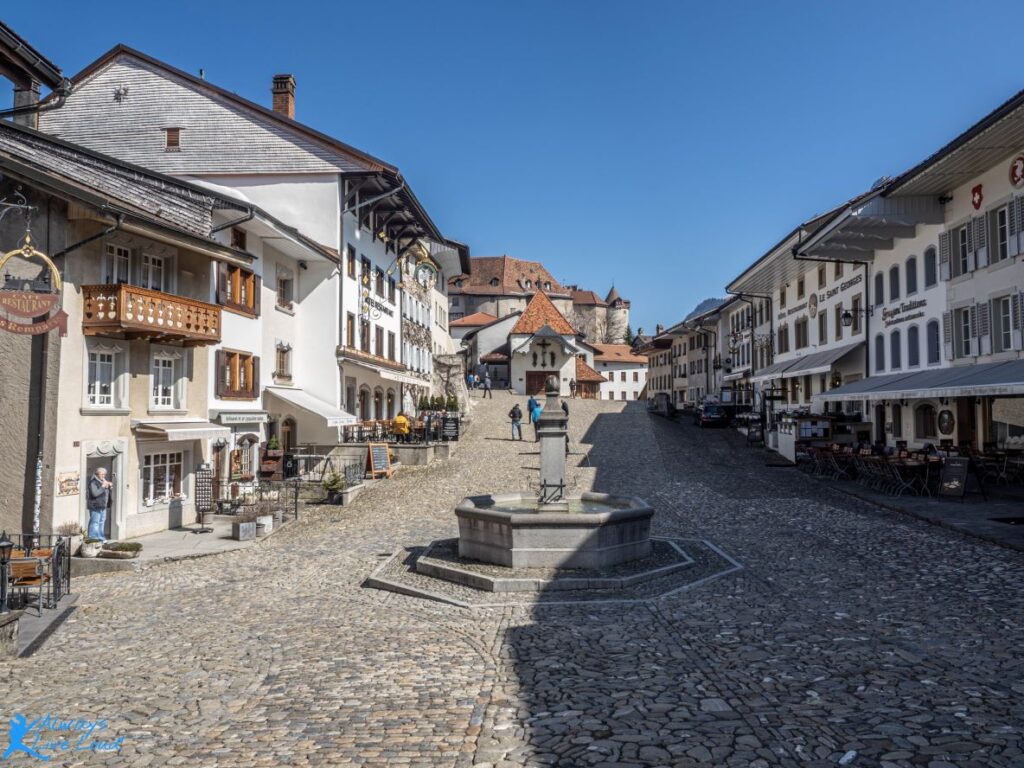Gruyères Medieval Town is one of Switzerland truly a gem. Is famous for its stunning Alps that create a breathtaking backdrop for some of Europe’s most beautiful views. The country boasts picturesque landscapes, from lush green valleys and serene lakes to charming villages, each bursting with its own unique character.

As you Experience the Legend, you will discover its rich history in the delightful medieval town. Picture cobblestone streets winding through lively squares, where centuries-old buildings proudly display intricate Gothic and Renaissance architecture.
A must-visit spot is the charming medieval town of Gruyères, a well-preserved landmark that perfectly captures the essence of Switzerland. It is a fantastic destination for anyone looking to soak in the area’s natural beauty and rich traditions!
The History and The Legend
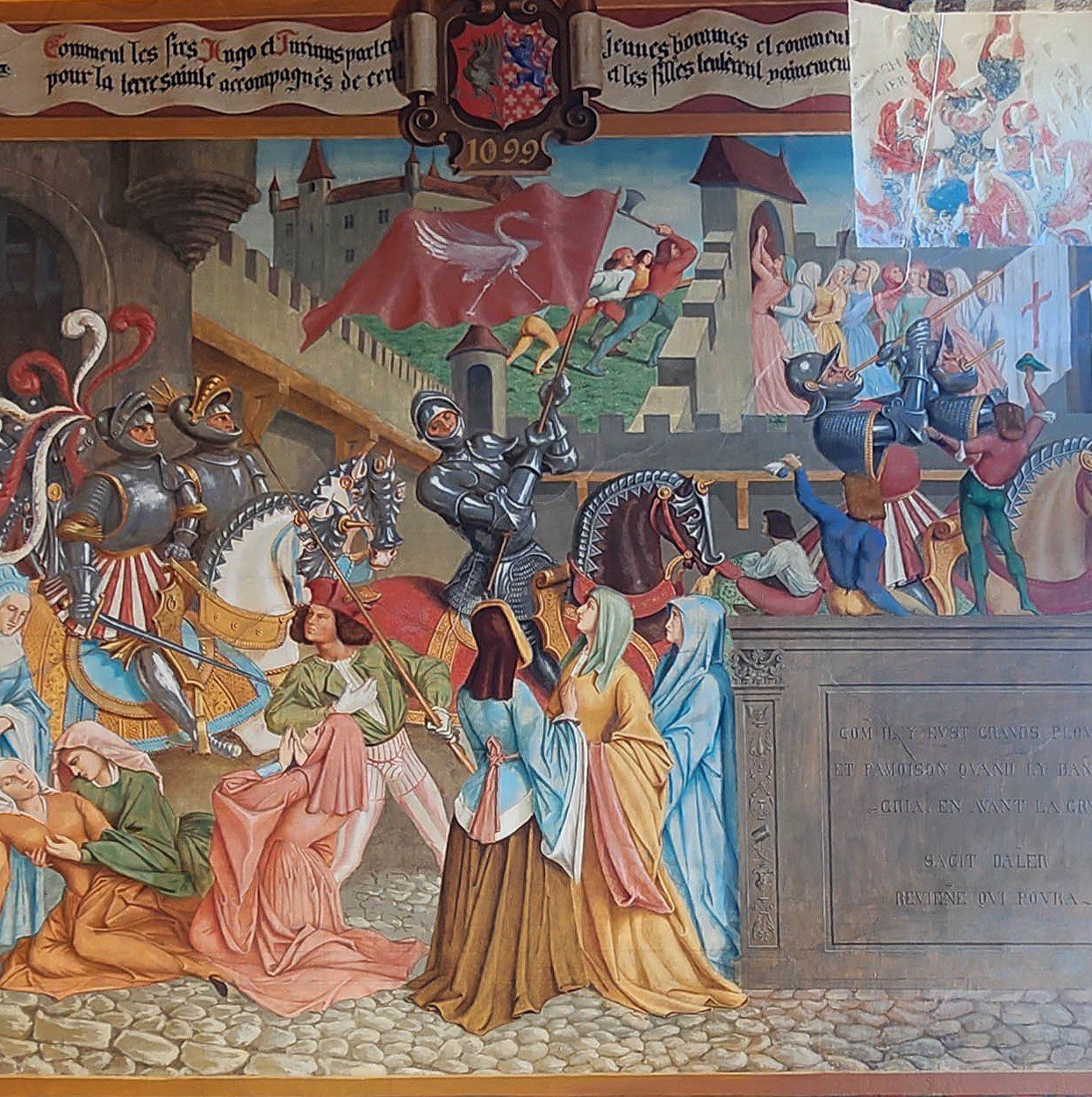
According to a charming legend, Gruyères was founded in 400 B.C. by the Vandal King Gruerius.
He found inspiration in seeing a beautiful crane, known as “grue” in French. The Crane was gliding gracefully across the vibrant crimson sky at dusk. This mesmerizing view led him to establish the Medieval town in this picturesque setting. Today, the town’s coat of arms proudly showcases a crane against a warm red backdrop, reflecting the enchantment of its beginnings.
A legend
Gruyères Castle, rich in history and legend, captivates visitors with its intriguing stories, particularly one about a severed hand. Legends say that this eerie relic was brought back from the Holy Land during the First Crusade, adding mystery to the castle’s narrative. The museum displays it in a glass case. Experts analyzed the relic and concluded that it is a mummy from Egypt—quite creepy!
The Foundation of Gruyères
Medieval town Gruyères is a charming place known for its stunning castle. And which once served as the home for the Counts of Gruyère.

In 1138, the Count created a settlement perched 810 meters above sea level. He thoughtfully chose a spot on a gently sloping ridge, which provided a fantastic view and made it easier to defend against any invaders. The villagers built charming stone walls and created inviting, narrow alleyways that foster a strong sense of community.
Thanks to the Count’s vision for a thriving, self-sufficient local life over the years, it became an essential hub for trade and agriculture.
While the area has seen great victories and some difficult moments, the castle stands proudly today, beautifully preserved and reminding us of its captivating past and breathtaking scenery.
Historical Significance
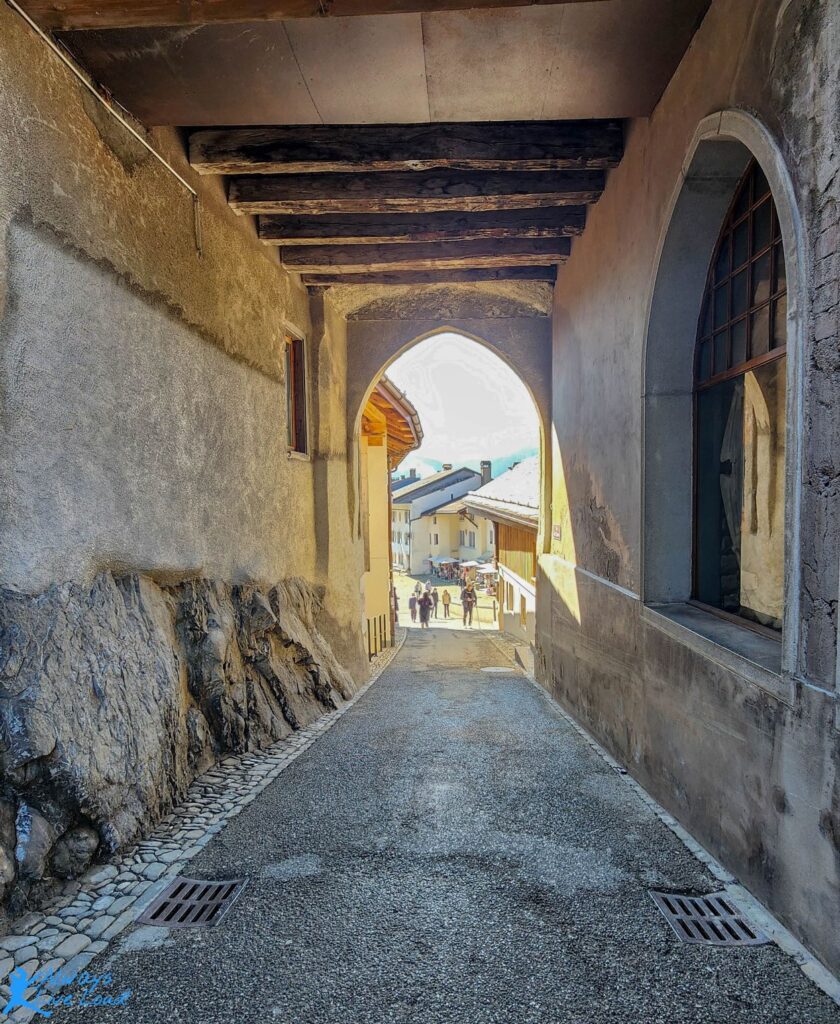
Gruyères really stepped up during the 1476 Battle of Morat, an important event in the Swiss Wars!
At this time, the Swiss forces faced Charles the Bold, Duke of Burgundy. Due to Gruyères’ strategic location and the enthusiastic support from the Swiss Confederation, they successfully gathered troops and resources. This ultimately led to their victory over the Burgundian army.
The battle marked a crucial moment in securing Swiss independence and highlighted the resolve of the Swiss people in the face of external threats.
The Castle

It was first recorded in 1244 and served as the residence for the Counts of Gruyère, a noble family in western Switzerland during the Middle Ages. Built in the 13th century in a “carré savoyard” style, it features a square enclosure, a keep, a tower, and turrets at each corner.
In the 15th century, Count Louis renovated the castle, transforming it into an elegant residence with stone galleries, large windows, a new staircase tower, and a chapel in a former tower.
For nearly five centuries, the counts governed territories from Gruyères, including lands on both sides of the Sarine River. The dynasty ended when Count Michel declared bankruptcy in 1554, leading to the confiscation of his properties by Bern and Fribourg.
Seat of the Bailiffs
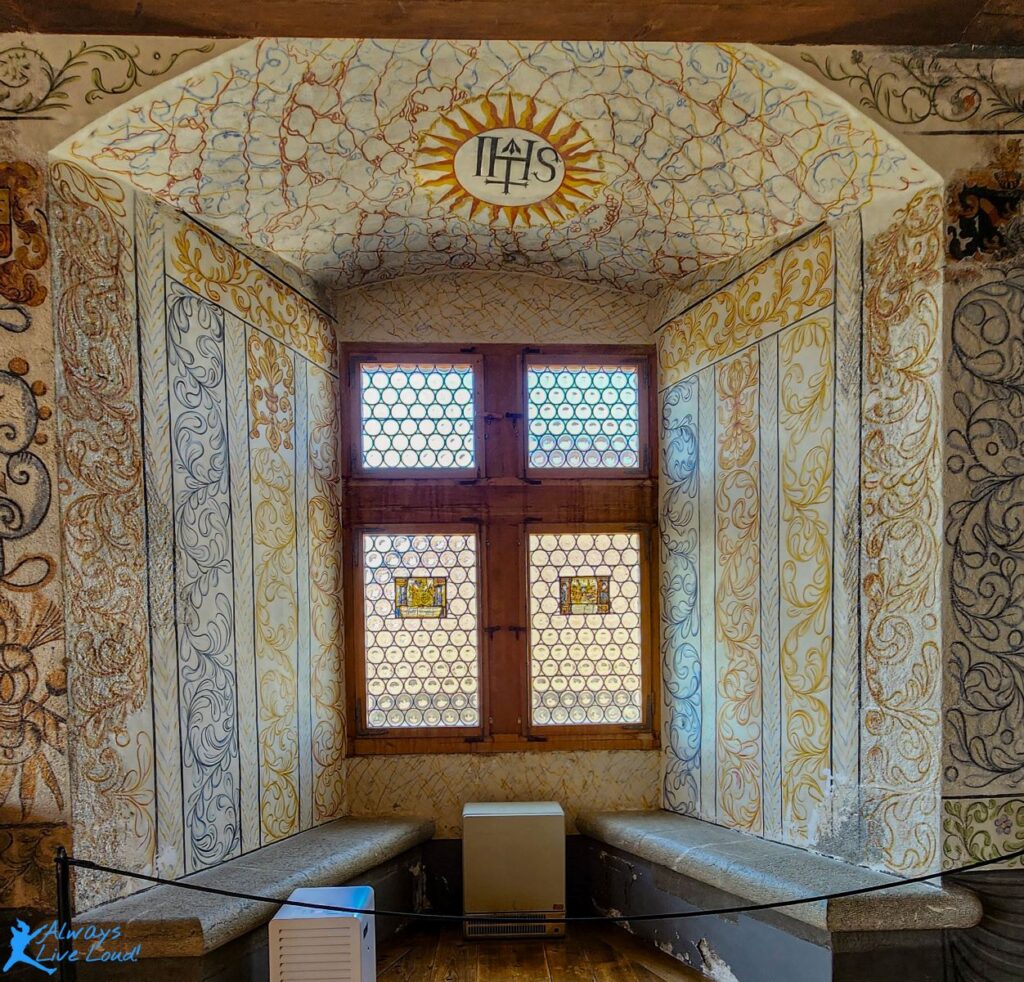
In 1554, after Count Michel went bankrupt, the authorities transformed Gruyères Castle into the official residence of the Fribourg bailiffs.These appointed officials, representing the city of Fribourg, lived in the castle from 1555 until 1798.
During this time, they were responsible for administering the region, overseeing judicial matters, managing finances, handling estates, and collecting taxes.

The bailiffs played a pivotal role in shaping the local economy and community. Their governance introduced systematic practices that significantly advanced the production and export of cheese, particularly the renowned Gruyère cheese, which would eventually gain international acclaim. Their efforts improved agricultural practices and fostered trade relationships, which helped establish the region as a key player in the cheese industry.
Following the expiration of the bailiffs’ administration in 1798, the castle was eventually sold to private owners, marking the end of its role as a center of regional governance.
The Castle Artistic flair
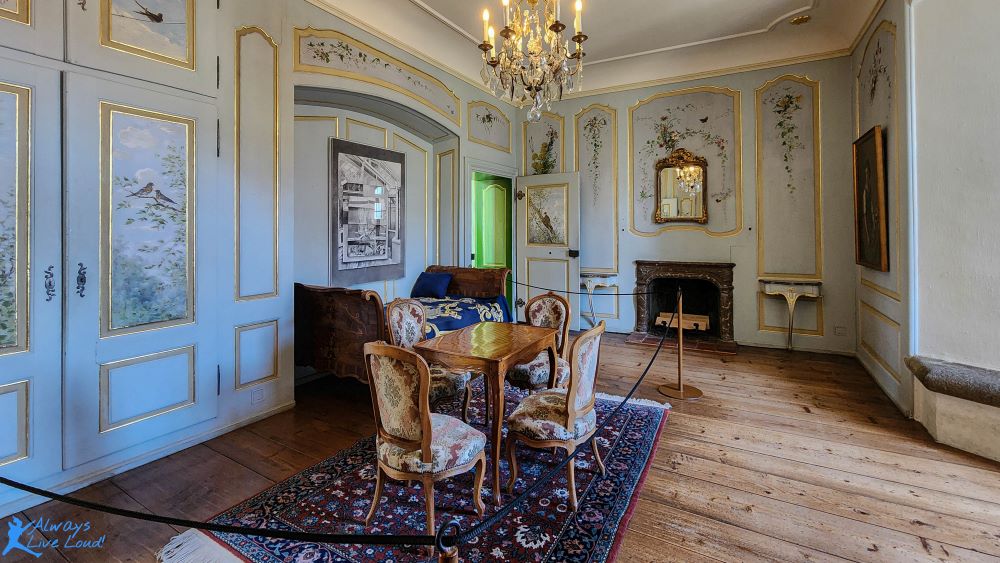
In 1849, the castle was auctioned after the prefecture seat moved from Gruyère to Bulle.
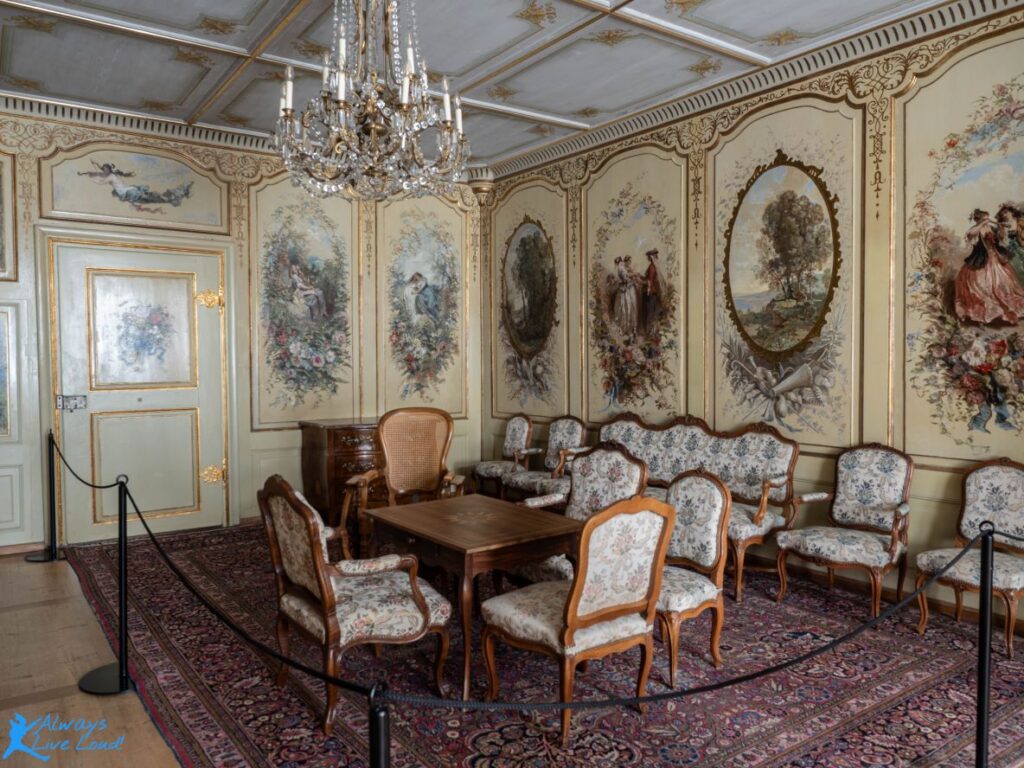
The Bovy brothers won the bid and relocated to Gruyères with the arrival of spring.
They renovated the castle and invited artist friends from France and Geneva to create new decor together. Under Daniel’s leadership, Gruyères Castle became an artists’ colony, fostering collaboration among painters, sculptors, writers, and musicians.

Days were dedicated to art, while evenings featured singing, performances, and communal meals.
The landscape paintings of Jean-Baptiste Camille Corot and Barthélemy Menn adorn the castle walls, showcasing the creativity fostered by this artistic community.
Other Parts Of The Castle
Along with the room we discussed earlier, there are so many other rooms to explore, each with its fascinating story! One of the best parts is the amazing artwork displayed all around. You’ll get to see the incredible talent of famous painters from the past, and it really gives you a sense of the rich artistic heritage this place holds.
Together, all these incredible rooms create a tapestry of history, art, and culture, making Gruyère Castle an excellent place for all visitors to explore and enjoy!
The Knight Room
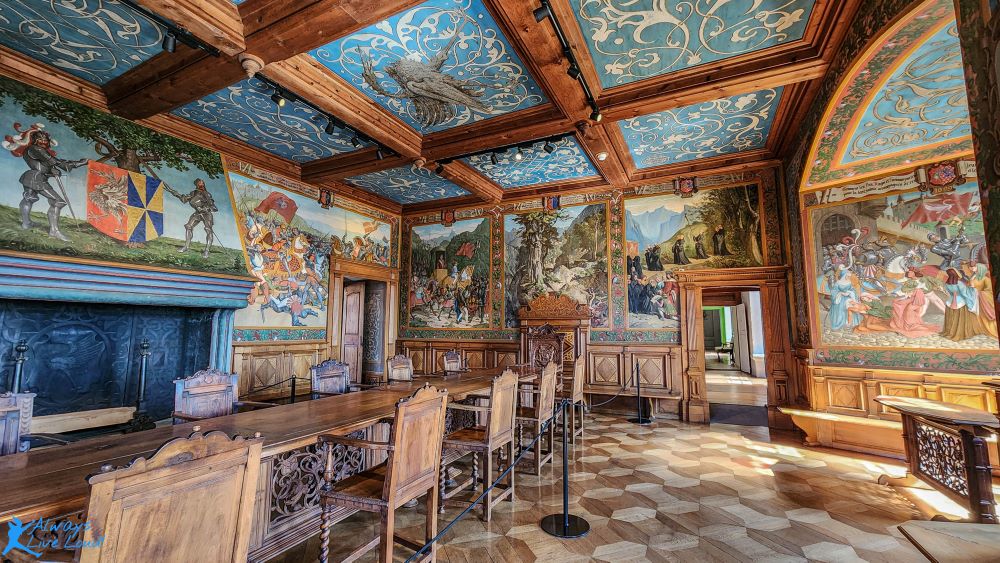
It’s an incredible space filled with beautiful paintings that tell the fascinating story of the Counts of Gruyère, mixing a bit of history with some captivating legends.
The room is part of the castle’s collection that highlights the rich history of Gruyères, and it’s decorated with charming medieval furniture. Plus, you’ll find some delightful troubadour decorations created by a talented group of artists in the 19th century.
The Medallion Room
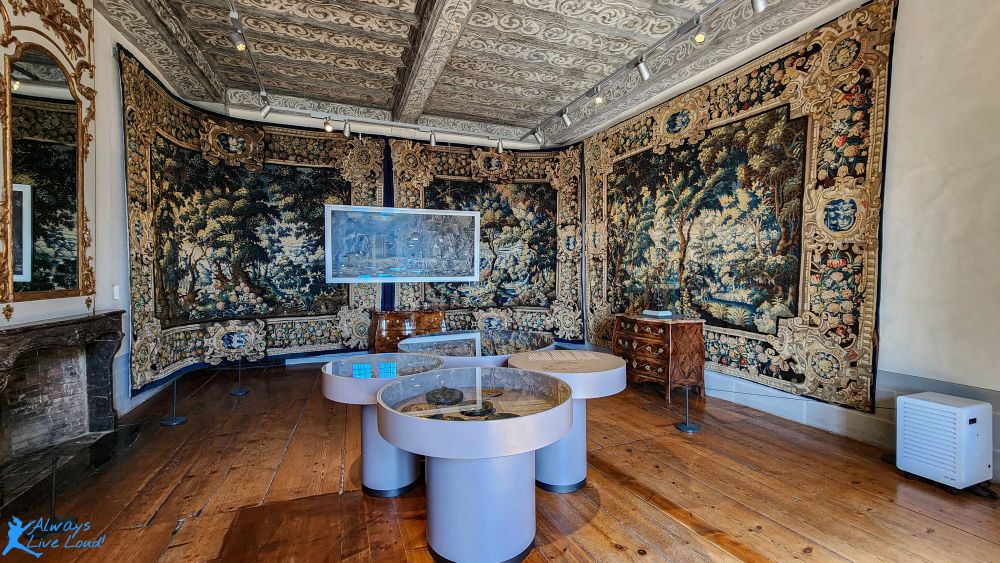
The room is a delightful treasure trove, showcasing a fascinating collection of historical currency and artifacts that capture the economic strength of the Counts.
One of the standout features is the famous figure of Helvetia, which appears on Swiss coins. The charming ceiling was painted during the bailiff’s era, and the walls proudly display beautiful tapestries of tree foliage known as “verdures.”
The Hunting Room

This lovely space used to be part of a stunning hunting lodge, which is a bit sad since it has been torn down. It’s a great reminder of how vital hunting was for the Counts of Gruyères and their bailiffs. You can almost feel the excitement as they showcased impressive trophies like mounted deer heads and beautifully carved wooden furniture!
The room still has a few of these trophies on display and some medieval furniture, making it truly interesting to see how hunting played such a crucial role back in the day.
The Count Chambers

Step into the Counts’ Chambers, which might just have belonged to Count Chambers himself! This inviting space transports you to a world of luxury and privacy.
As you explore, you’ll discover beautiful medieval furniture, from intricately carved tables to charming cabinets that tell stories of the past. And don’t miss the chance to see the Count’s “throne” chair—it’s a stunning piece that highlights the elegance and charm of the era.
You’ll feel like royalty as you take in all these delightful details!
Outside at the court: The Chapel
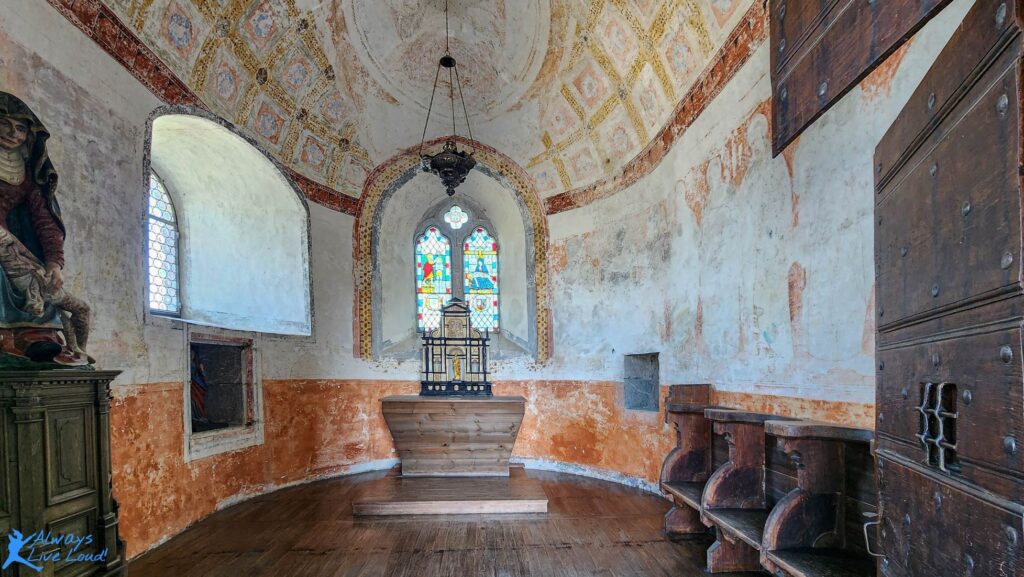
Gruyères Castle has a charming Baroque-style chapel tucked away inside its walls, adding a lovely touch to the castle’s overall design.
This inviting chapel showcases beautiful decorations, colorful frescoes, and delicately crafted altars that really highlight the elegance of Baroque architecture. It’s a wonderful spot for visitors to explore and soak in the history and artistry of this stunning location!
Enjoy the video!

